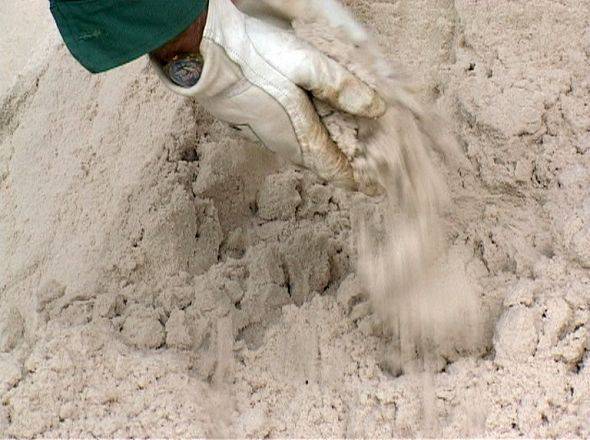To lower the quartz fusion temperature (about 1700° C) a flux is added, generally sodium oxide. In current production, it is added in the form of carbonate (soda) or nitrate. Whatever its origin is, either natural or artificial, soda, at about 800°, breaks down into carbon dioxide (gas) and sodium oxide. Sodium oxide has the ability to react, in the solid state, with the silica thereby transforming the quartz in sodium silicates which melt at a lower temperature.
Potassium or potassium carbonate (K2CO3) behave in the same way, and are also produced industrially now. Soda (or potash), in addition to making the silica more meltable, has the property of lengthening the range of temperatures within which the glass solidifies (production range), and makes - in the jargon - the glass longer.
In Roman and late-Medieval times, the flux was natron, natural sodium carbonate which is found in salt lakes in the Middle East. Glass, melted in Syria, Egypt or Lebanon with local calcareous-siliceous sand, was exported in the form of rough blocks of glass to then be remelted and worked in glass centres located in all the Mediterranean basin area and northern Europe.
In the Middle-Ages, natron was substituted by plant ash. Depending on the geographical location of the glass works, the plants which were burned were of marine or land origin. In the marine types, which were used prevalently in the Mediterranean area, soda was extracted; from the ashes of continental plants (oak, beech, ferns...), used mainly in northern Europe, potash was obtained.
As it was still impossible to carry out chemical analyses to determine the level of alkaline carbonates in the ash (generally very low and variable), the glass works judged it by the quality of the colour, the smell and with the aid of taste.
When one wanted to produce pure and uncoloured glass it was necessary to extract sodium (or potassium) carbonate from the ashes, through leaching, melting the ashes in boiling water and filtering the insoluble residue. After leaching, about 40% of alkaline salts (carbonates, sulphates and chlorides) could be obtained from the best ashes. This was the Venetian glazier's main secret which led to the invention of crystal, a glass which is so clear and uncoloured that it can be compared to rock crystal (quartz).
It was only at the end of the 1700s, in France, that soda began to be produced artificially, using sodium chloride as the primary material (marine salt or rock salt). In 1791 Nicolas Leblanc set up a process for the production of artificial soda, which is much richer in sodium carbonate than natural fluxes, but still contains many impurities. With this method, a product was obtained containing 70-75% of sodium carbonate. One of the drawbacks of the Leblanc process was the high production costs.
In 1865 in Belgium, a new process was devised to extract sodium from marine waters, via treatment with ammonia, to transform it then into sodium carbonate. This Solvay process produces soda which is much better and much cheaper and which, appropriately perfected, is still used.

